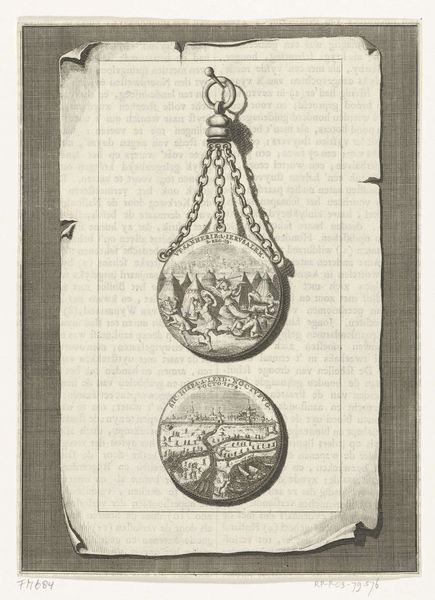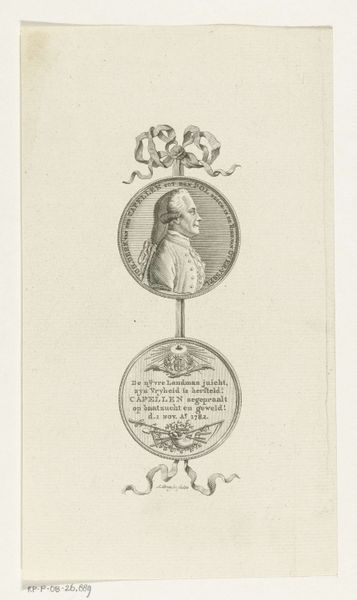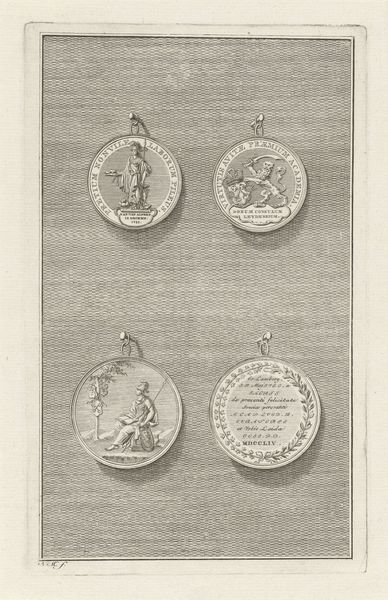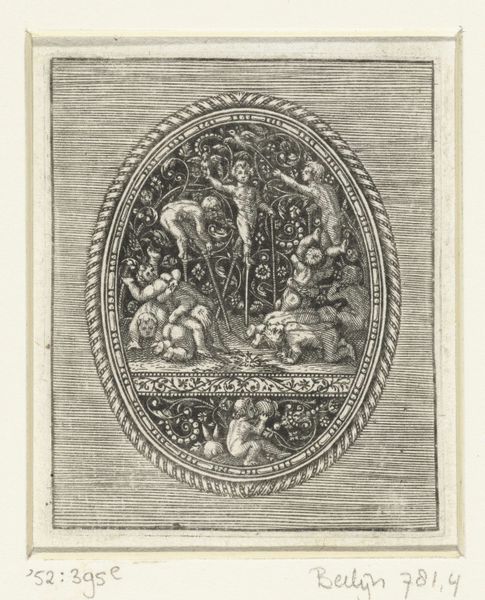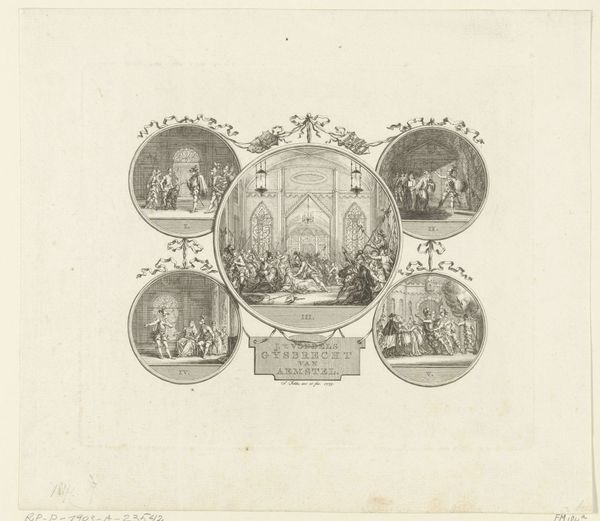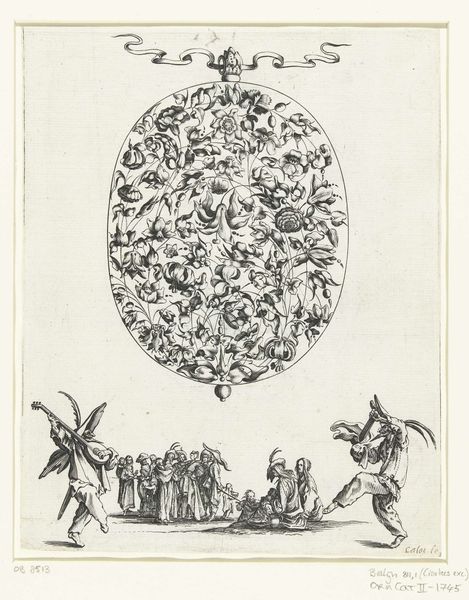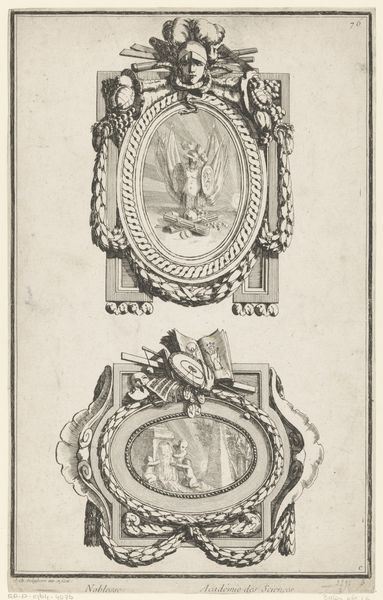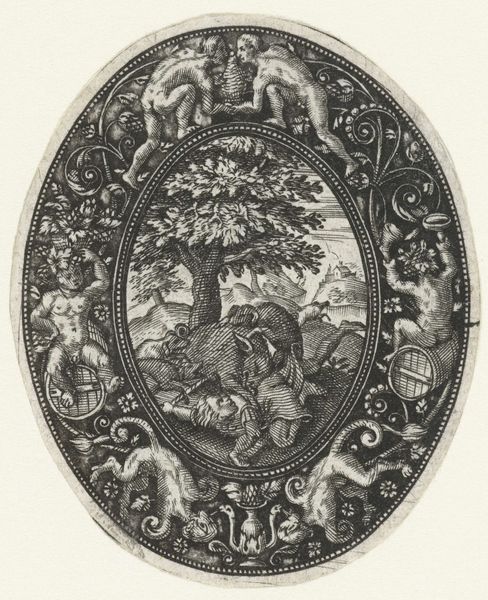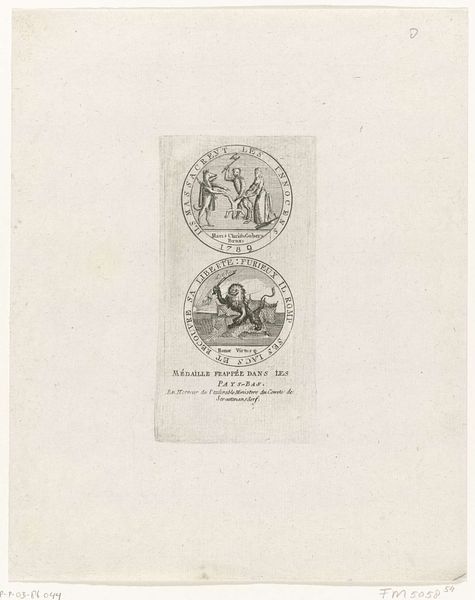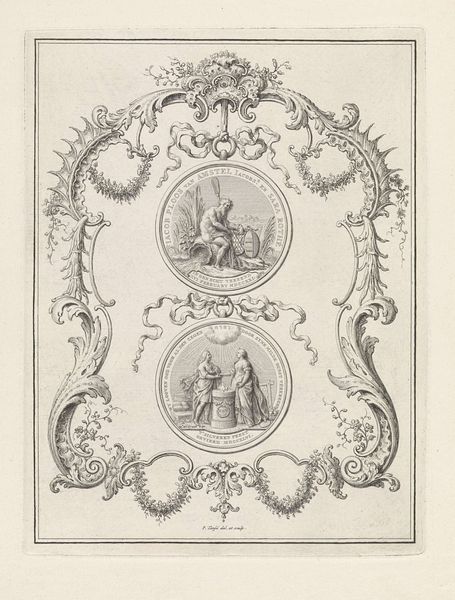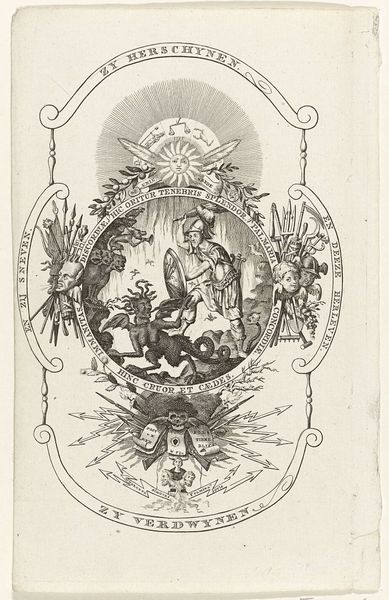
drawing, print, ink, engraving
#
drawing
#
baroque
# print
#
old engraving style
#
ink
#
geometric
#
cityscape
#
history-painting
#
engraving
Dimensions: height 146 mm, width 75 mm
Copyright: Rijks Museum: Open Domain
Editor: Here we have an engraving titled "Penning op het ontzet van Leiden, 1574," made sometime in the 18th century, depicting a historical scene in two circular medallions. The detail is incredible, almost microscopic! I’m immediately struck by the dynamism of the top circle, the fleeing figures. What story does it tell, and what is the historical context that informed this imagery? Curator: It's interesting that you highlight the dynamism. Consider this piece as not merely an image but a political object, a carefully constructed narrative. The top medallion alludes to the Assyrian siege of Jerusalem, linking it to Leiden’s siege, creating a historical parallel of divine deliverance, doesn't it? It’s designed to evoke specific emotions. What kind of impact do you think these medallions would have had on public perception and civic identity at the time? Editor: So it’s deliberately framing Leiden’s experience as a kind of holy deliverance! The parallel you draw, linking it to biblical history, makes it even more potent as propaganda. The inclusion of two separate images on one "coin" seems significant... almost like the artist wants to underscore a message of triumph over adversity by visually juxtaposing the battles. How might this affect its meaning to different audiences across time? Curator: Precisely. And, crucially, think about where this "coin" might be displayed or circulated. Its creation during the 18th century – well after the actual siege – speaks to its enduring symbolic power, a visual reinforcement of Leiden's identity and its resistance against Spanish rule. This "Penning" functioned not just as historical record but as a constant reminder of civic virtue. But does the depiction of the people of Leiden align with how history recalls it? Are there elements of exaggeration or omission that would reshape public understanding of the actual siege and deliverance? Editor: That’s fascinating. I hadn't considered how its creation much later colored its meaning and purpose. It’s no longer just about the historical event, but about how that event continues to shape identity. Thinking about who sees this, who commissions it, and what message they intend… it shifts the whole perspective. Curator: Exactly. And by engaging with this piece through the lens of historical narratives, civic identity, and symbolic representation, we gain insight not only into the artwork itself, but into the broader political and social landscape of the time and beyond. Editor: This makes me want to dig even deeper into the history and the symbols and the artist. Thanks for sharing your perspective.
Comments
No comments
Be the first to comment and join the conversation on the ultimate creative platform.
